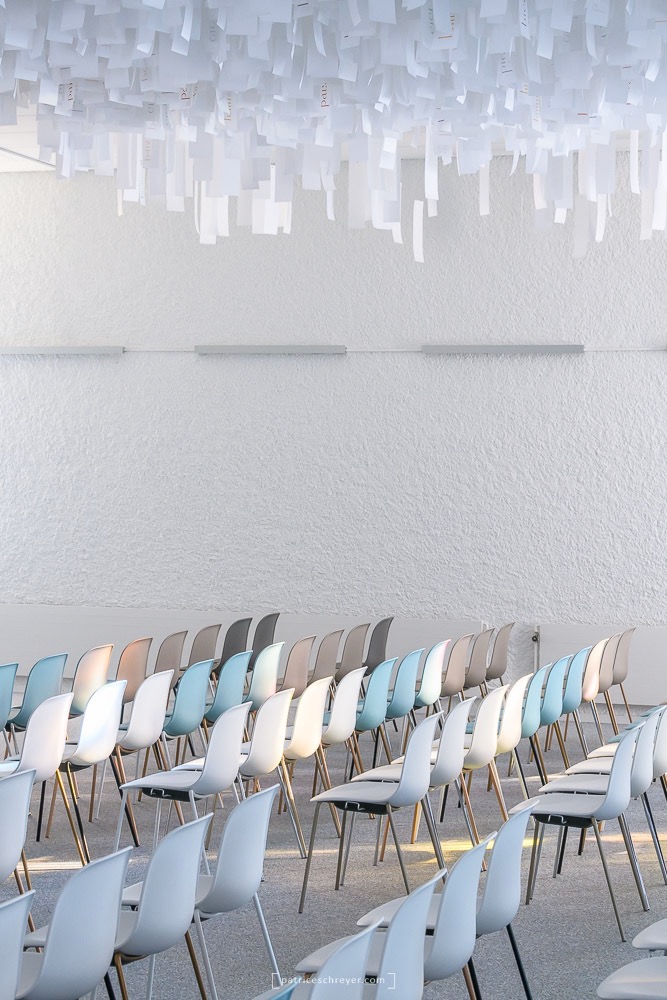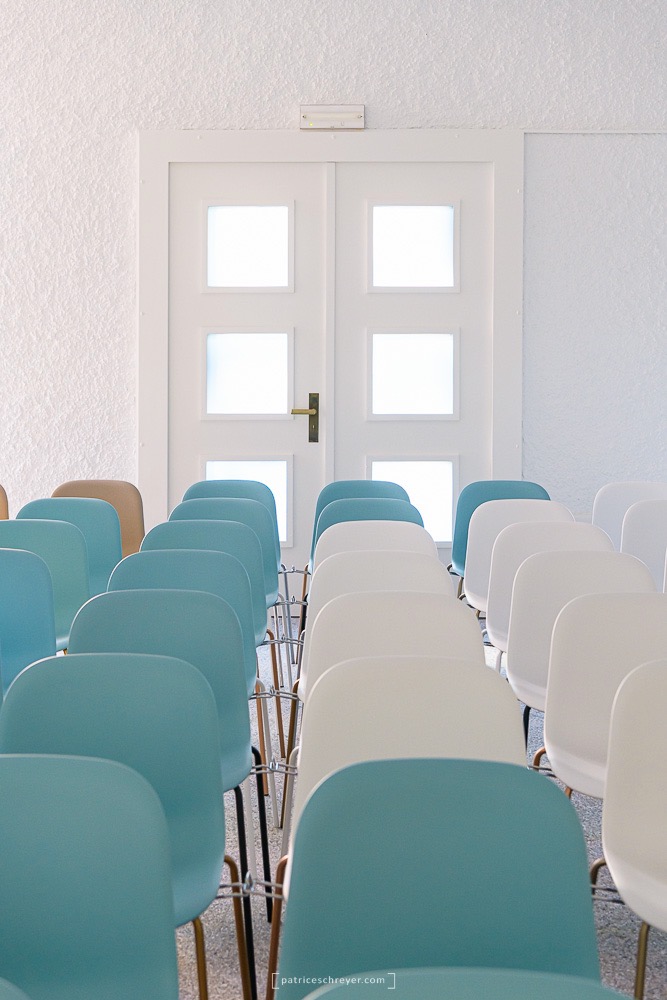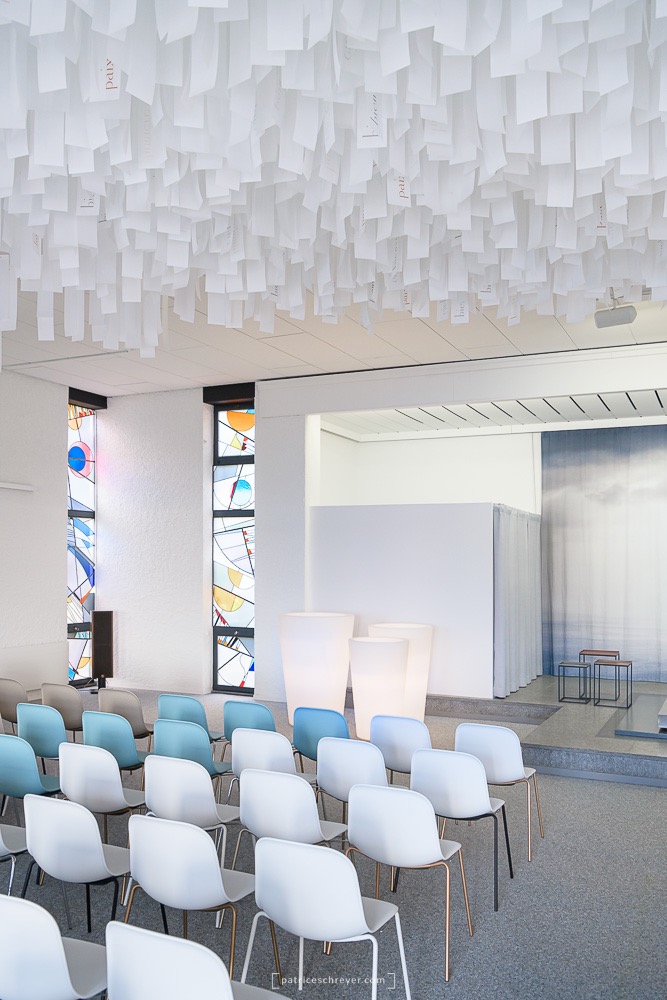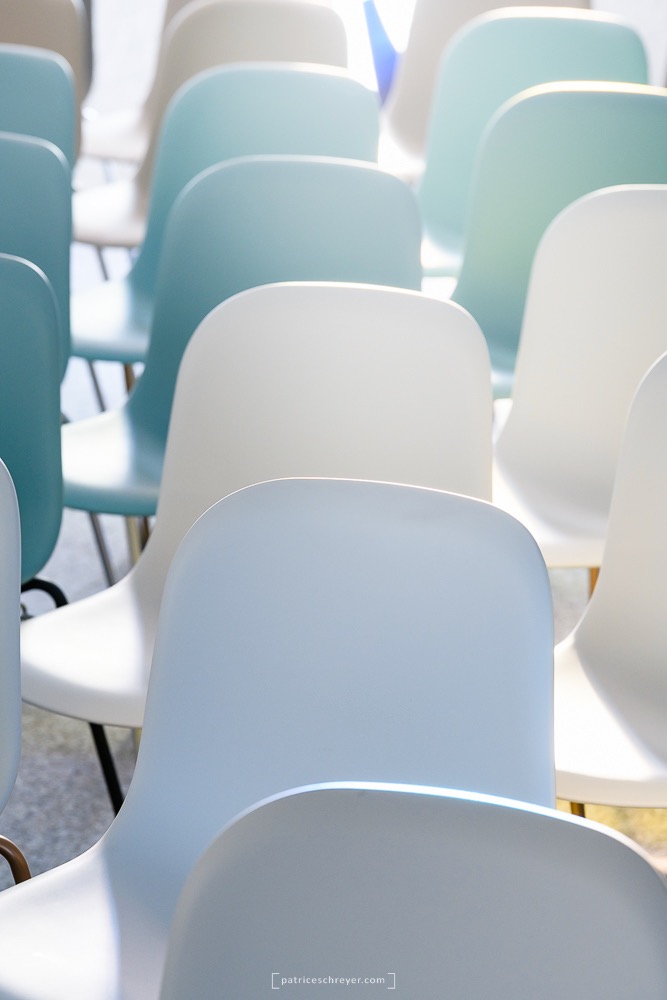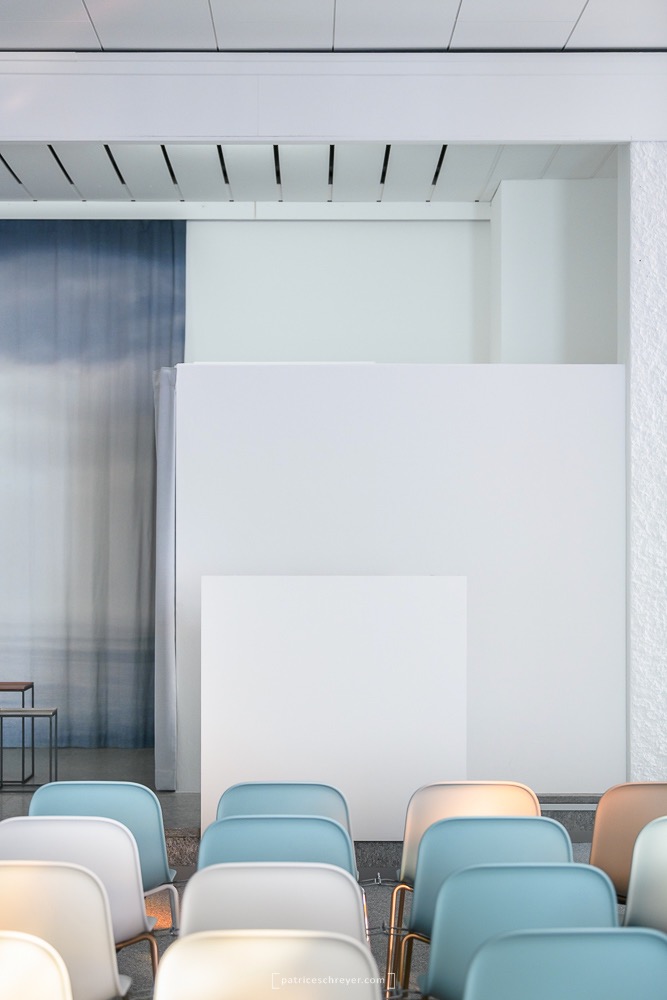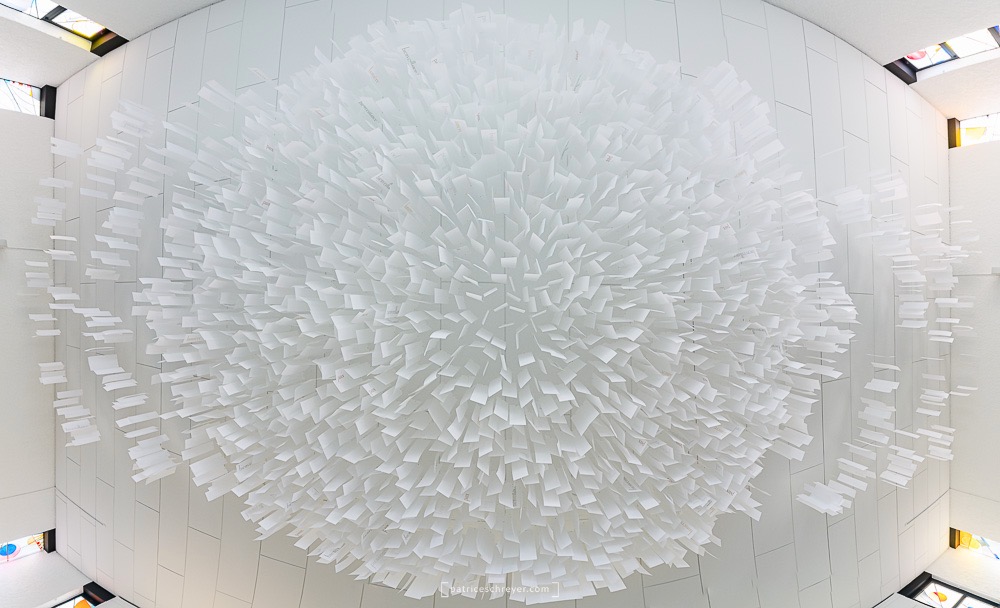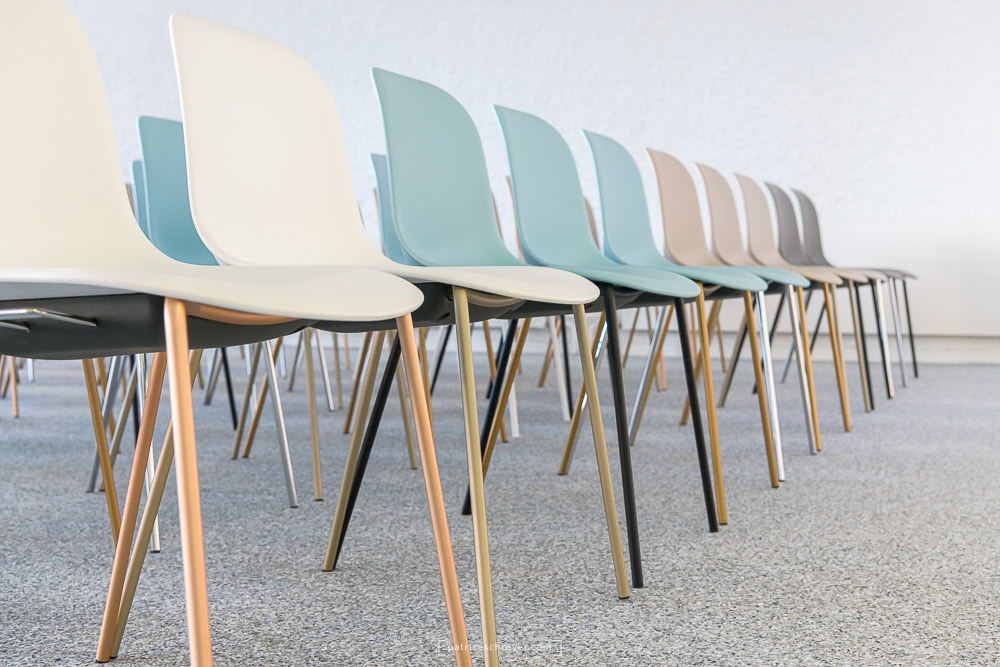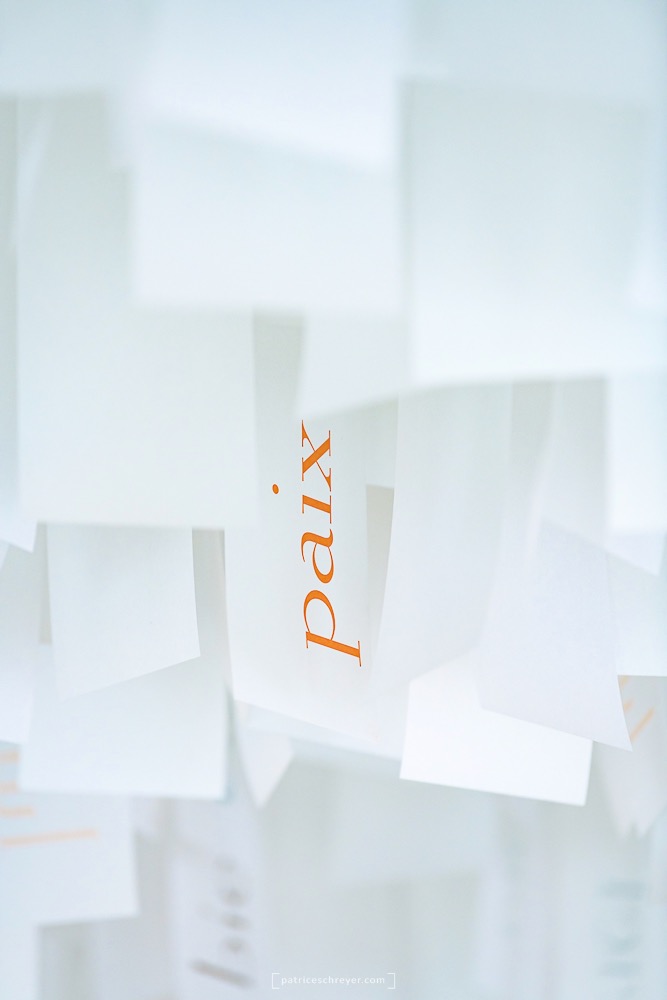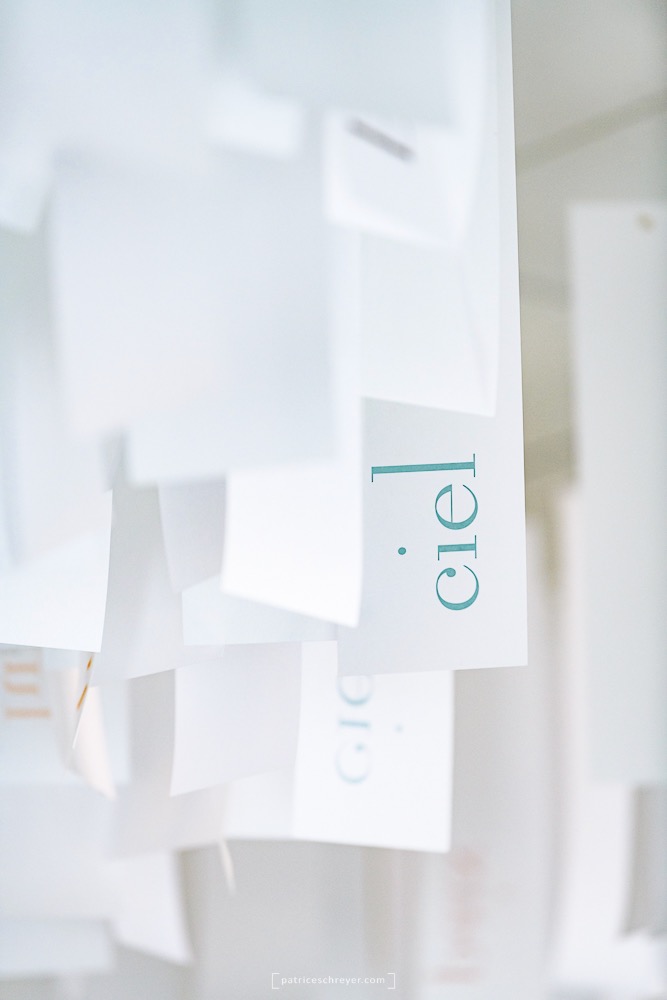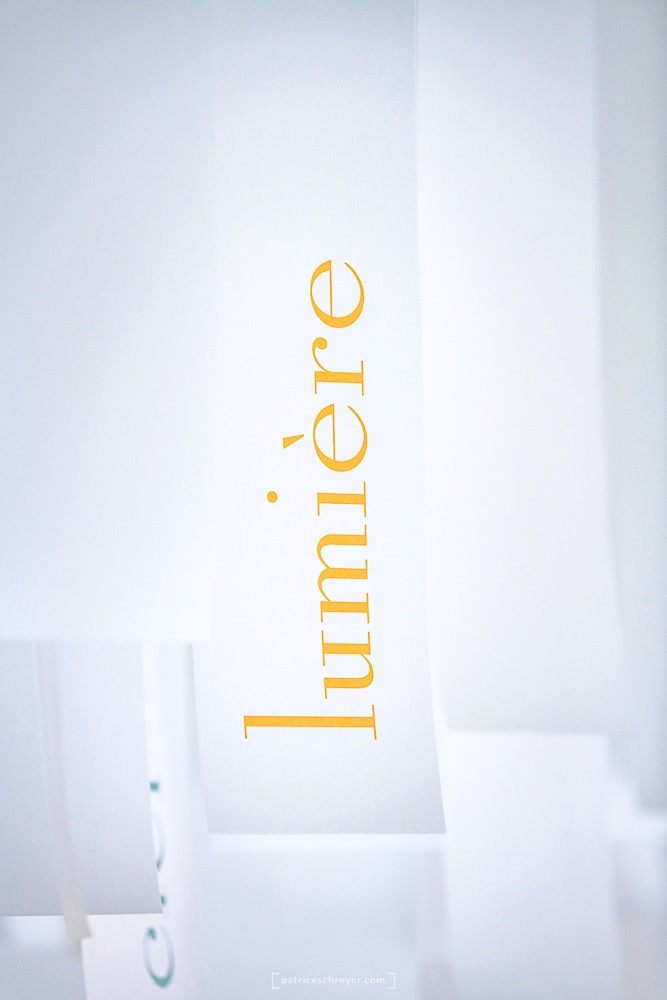The intent: to modernize giving a sense of calm
The first goal was to modernize the chapel, while highlighting the existing windows. This by offering a new range of colors that wanted to be bright, soft and relaxing.
For this reason, the entire chromatic structure of this place dedicated to contemplation has been redesigned: the ceilings, originally in dark colored wood, have been repainted in white, as well as all the exposed wooden parts.
The dark carpet has been replaced by one with softer shades in which shades like light gray, light blue and white appear, giving the whole a serene base.
Even the furnishings – and in particular the chairs (Máni Plastic by Arrmet) – have been redesigned according to a more contemporary code, showing soft colors reminiscent of those of the new carpet.
The old dark blue velvet curtains have been removed and replaced by light gray side fabrics that frame a central curtain reproducing a photograph of the Neuchâtel artist, Patrice Schreyer.
As in a series of mirrors, photography offers a view of the lake which can be found poetically in front of the chapel, with all its shades of light blue and gray.
In order to give this new space a feeling of protection with the new visual dimensions provided by light shades, the studio has created a monumental paper installation made up of over 3,000 Japanese paper bookmarks.
Ouroboros, a protective symbol
All these elements are orchestrated around the concept of Ouroboros, a symbol that, from the dawn of time, has embodied the cycle of time and eternity, that of life and death … Ouroboros is represented by a snake that bites its tail in an endless circle.
The circle resulting from this symbol is found in the round shape of the monumental installation of the ceiling: a gigantic circle, which dematerializes laterally to thus protect all the space.
The arrangement of the chairs, grouped in four colors, also draws, seen from above, a white circle in the center of the chapel which is amplified by concentrating by changing color: pale blue, light gray then anthracite gray.
Refinement merges into details.
In this place suitable for contemplation, some small highly symbolic details are scattered: in particular the chairs that, with their different combinations of colors and the metallic variations of their stems, make them unique… As if to signify that each individual is unique.
When you look closely at the paper installation on the ceiling, you can see that four words are hidden in the midst. Four words that delicately reproduce the colors of the theme and that are like talismans in these moments of meditation: “peace”, “sky”, “light” and “benevolence” …
Even the format of these Japanese paper bookmarks is not due to chance: 44 cm in length by 11 cm in width, but the number 1,144 means “to find the origin of one’s soul”, in the Japanese tradition.
The designer
It is no coincidence that the Swiss Jorge Cañete, born in Geneva in 1970, chose to devote his life to interior architecture.
Indeed, his sense of beauty has been refined by his work for luxury brands. Graduated in economics and MBA, he started for the first time an international career in the marketing of luxury goods, which made him stay in New York, Madrid, Rome and in the capitals of the Far East.
In 2004 he decided to stop everything to start a new career: he graduated in Interior Design at the Metropolitan University of London and began his career with an architect in Geneva, then in Rome.
In 2005, he chose to stand on his own and created his own studio, Interior Design Philosophy, based in Switzerland.
His projects (private apartments, villas, chalets, shops, castles, showrooms) immediately bear a particular signature: an emotional, narrative and poetic interior decoration that is inspired, above all, by the personality and values of its customers.
Credits:
Project by Jorge Cañete
www.jorgecanete.com
Photos by Patrice Schreyer
www.patriceschreyer.com
